Tawang Travel Guide: Attractions, ILPs & How to Plan Your Trip
Why Tawang?
Situated in the remote and majestic Himalayan ranges of Northeast India, Tawang lies tucked between the international borders of Bhutan and China. The region offers dynamic landscapes throughout the year — from snow-capped peaks and frozen lakes in winter to emerald meadows and blooming rhododendrons in spring, and from the golden hues of autumn to lush, rain-kissed valleys in summer — each season revealing a different mood and photographic opportunity.
Often called a paradise on Earth, Tawang combines its natural spectacle with deep cultural roots. The world-renowned Tawang Monastery, lively Monpa festivals, and intricate traditional handicrafts bring a timeless human dimension to the mountains. Together, breathtaking scenery, spiritual heritage, and authentic local experiences make Tawang one of the most compelling destinations in Arunachal Pradesh and a must-visit when exploring Northeast India.
Sightseeing in Tawang
Tawang offers diverse attractions throughout the year, blending spirituality, history, and natural beauty into a single unforgettable experience. From centuries-old monasteries to crystal-clear alpine lakes, every corner of Tawang invites travelers to pause, reflect, and soak in its unspoiled charm. The landscape constantly shifts with the seasons — snow-clad in winter, blooming with rhododendrons in spring, lush green in summer, and painted in golden hues during autumn — making every visit unique and refreshing.
- Tawang Monastery: The second-largest monastery in the world, over 300 years old, perched on a hilltop overlooking the valley. It houses priceless manuscripts, ancient thangkas, and a grand 28-foot statue of Lord Buddha, offering visitors a deeply spiritual experience alongside breathtaking panoramic views.
- Lord Buddha’s Stupa: A revered site that draws pilgrims and travelers alike. The peaceful surroundings, prayer flags fluttering in the wind, and the chants of monks make this stupa a focal point of spiritual energy in Tawang.
- Birthplace of the 6th Dalai Lama: Tawang is also the birthplace of Tsangyang Gyatso, the 6th Dalai Lama. Visitors can see the sacred site and learn about his remarkable life, poetry, and influence in Tibetan Buddhism, which adds great cultural significance to the region.
- Tawang War Memorial: Honoring the valor and sacrifices of the Indian Army in the Indo-China war of 1962. Built in the form of a stupa, this memorial stands as a poignant reminder of courage, and its evening light-and-sound show narrates stories of bravery that move every visitor.
- Madhuri Lake (Sangestar Tso): A stunning blue-water lake amidst alpine landscapes, famous for its appearance in the Bollywood movie Koyla. Surrounded by snow-clad peaks and pine forests, the lake changes colors with the sky, making it a photographer’s delight and a peaceful retreat.
- Pangateng Tso (PTSO Lake) & Nagula Lake: Serene spots ideal for photography and nature walks. These high-altitude lakes freeze in winter, creating surreal icy landscapes, while in summer, they reflect the vibrant blues of the sky and the greens of the surrounding meadows.
- Bum La Pass: Located at 15,200 feet near the Indo-China border, offering panoramic views of the Tibetan plateau and snow-covered mountains. The journey itself is thrilling, as roads cut through rugged terrains, and on clear days, you can even witness the Indo-China border gates.
- Nuranang Waterfalls: Near Jung, a spectacular cascading waterfall dropping from a height of around 100 meters. The misty spray, roaring sound, and rainbow formations around the fall make it one of the most captivating natural wonders in Arunachal Pradesh.
- Sela Lake (Paradise Lake): Situated in Sela Pass at 13,700 feet, a must-visit natural wonder. Surrounded by snowy mountains for much of the year, this turquoise-hued lake is steeped in legends and adds unmatched serenity to the journey toward Tawang.
Other nearby attractions include Zimithang, an offbeat valley dotted with traditional villages; the Chagzam bridge, a 15th-century iron suspension bridge built by a disciple of Lama Tsangpa; and the sacred Chumi Gyatse waterfalls, often referred to as the "Holy Waterfalls" by locals. In addition, exploring quaint Monpa villages allows travelers to immerse themselves in the region’s vibrant culture, sample traditional cuisine, and witness age-old weaving and farming practices that continue to thrive in these remote Himalayan settlements.
How to Reach Tawang
By Road
Tawang is well-connected by road from Guwahati via Tezpur. The journey passes through scenic mountain passes like Sela Pass and picturesque towns such as Bomdila and Dirang.
By Air
The nearest airport is Tezpur Airport (TEZ), followed by a road transfer to Tawang. For better connectivity, most travelers prefer Guwahati Airport (GAU), which is the nearest major airport with regular flights.
By Train
The closest railhead is Rangapara railway station. From there, taxis and buses are available to reach Tawang via Bomdila or Dirang.
Permits?
Visitors require an Inner Line Permit (ILP) to enter Tawang. The ILP can be obtained online or from designated offices in Delhi, Itanagar, or Guwahati. Foreign nationals need a Protected Area Permit (PAP) from the Ministry of Home Affairs, Government of India. Note: Foreign nationals are not permitted to visit Bum La Pass. Nationals of Bangladesh, China, and Pakistan are not allowed entry into Arunachal Pradesh.
click here to apply for online ILP
Weather in Tawang
Tawang, located at an altitude of around 3,000 meters in Arunachal Pradesh, experiences a classic high-altitude Himalayan climate. The town is known for its crisp mountain air, snow-clad winters, and cool, pleasant summers, making it a year-round destination for travelers seeking both serenity and adventure.
| Season | Months | Temperature Range | Highlights |
|---|---|---|---|
| Winter | December – February | -10°C – 10°C | Frequent snowfall transforms Tawang into a white wonderland. Roads may temporarily close but are quickly cleared by the Border Roads Organisation (BRO). Ideal for witnessing Sela Pass, Bum La Pass, and frozen alpine lakes in their most magical form. |
| Summer | March – June | 5°C – 20°C | Pleasant and sunny with clear skies—perfect for exploring monasteries, local culture, and serene lakes. Excellent time for photography and comfortable travel without the chill of winter. |
| Monsoon | July – August | 8°C – 18°C | Moderate to heavy rainfall brings misty hills and lush greenery. Note: Occasional landslides can affect road travel, but this period rewards visitors with ethereal cloudscapes and quiet, uncrowded surroundings. |
| Post-Monsoon (Autumn) | September – November | 10°C – 18°C | The most stable and scenic period of the year. Clear skies, unobstructed mountain views, and rust-tinged slopes make it ideal for sightseeing, outdoor exploration, and viewing the snow-capped Himalayas in all their glory. |
Tawang receives moderate to heavy snowfall from late November to March. Travelers should carry warm woollens, gloves, and thermal wear throughout the year, as evenings remain chilly even in summer. Sunglasses, sunscreen, and lip balm are essential due to strong high-altitude sunlight.
Best Time to Visit Tawang
The best time to visit Tawang depends on the kind of experience you’re seeking:
- September–October: Pleasant weather, minimal rainfall, ideal for sightseeing and road travel.
- November–February: Winter season with snowfall — perfect for snow lovers and photography enthusiasts.
- March–April: Spring season, blooming landscapes, suitable for trekking and nature walks.
Sample Itinerary
Day 1: Guwahati → Bhalukpong/Nameri (optional halt) → Bomdila/Dirang/Sangti
Day 2: Bomdila/Dirang/Sangti → Tawang
Day 3: Explore Tawang Local (Monastery, War Memorial, Stupa, Dalai Lama Birthplace)
Day 4: Visit Madhuri Lake, Bum La Pass, PTSO Lake
Day 5: Tawang → Bomdila/Dirang/Sangti
Day 6: Bomdila/Dirang/Sangti → Shergaon (optional halt) → Guwahati OR Bomdila/Dirang/Sangti → Bhalukpong/Nameri (optional halt) → Guwahati
For more detailed itineraries and booking options, check out our Tawang Tour Packages.
With the optional halts, the itinerary could be made less hectic, and more relaxed.
Travel Tips
- Carry warm clothing year-round, as high-altitude regions remain cold even in summer.
- Use sturdy footwear for trekking and sightseeing on rugged terrain.
- Keep your ILP/PAP and valid ID proofs handy at all times.
- Altitude sickness can occur; acclimatize gradually, stay hydrated, and avoid alcohol in the first 24 hours.
- Respect local customs and traditions of the Monpa and Sherdukpen communities.
- Keep cash handy; ATMs and card facilities are limited in remote areas.
- Airtel and BSNL provide the most reliable mobile connectivity in the region.
- Plan your travel between September and April for the most favorable conditions.
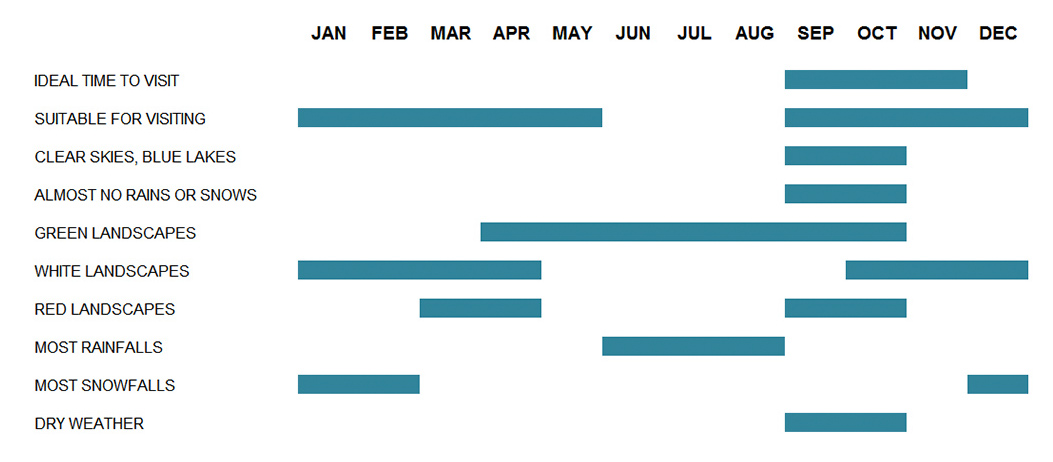
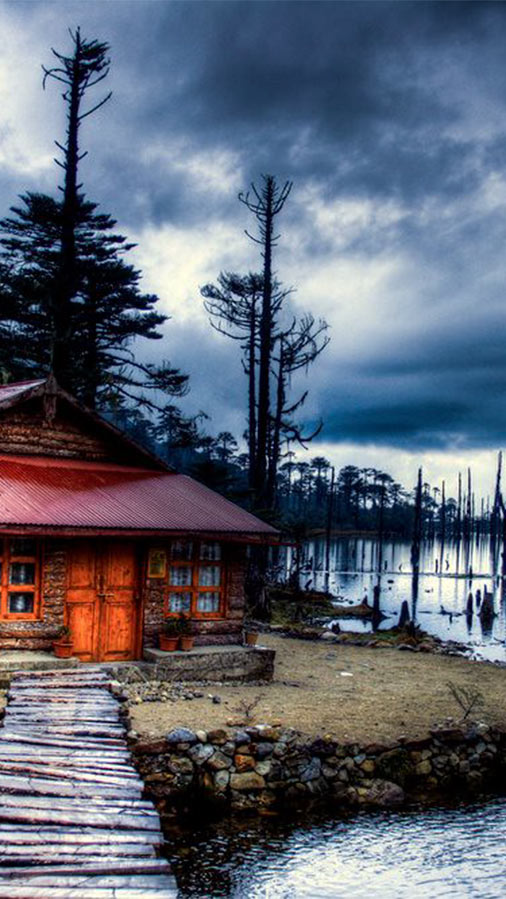
Madhuri Lake
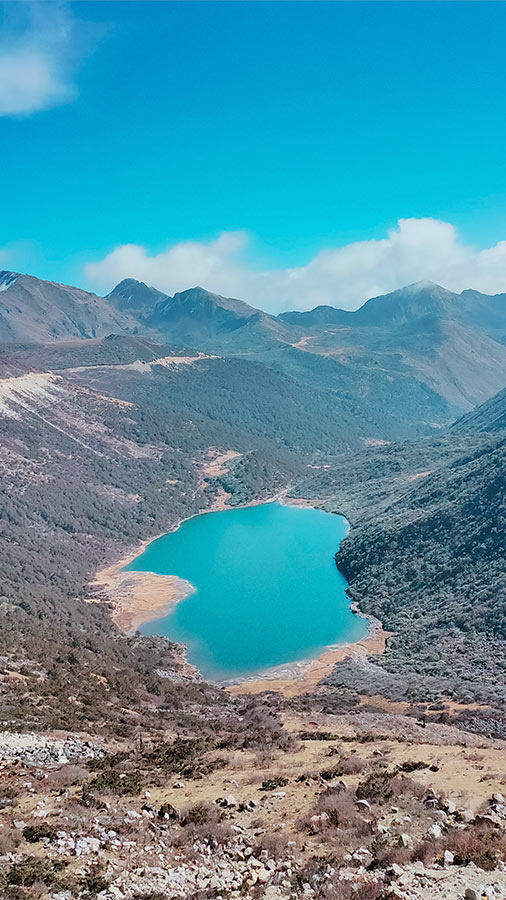
Nagula Lake
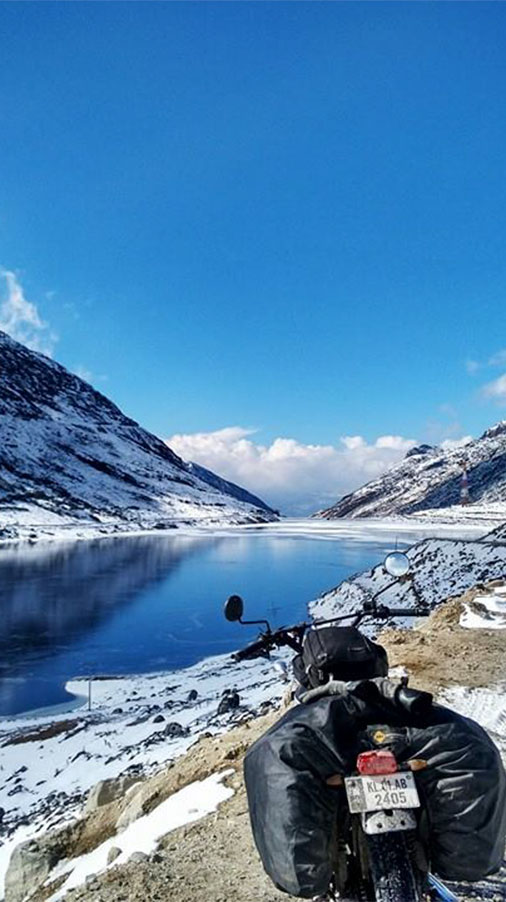
Sela Pass
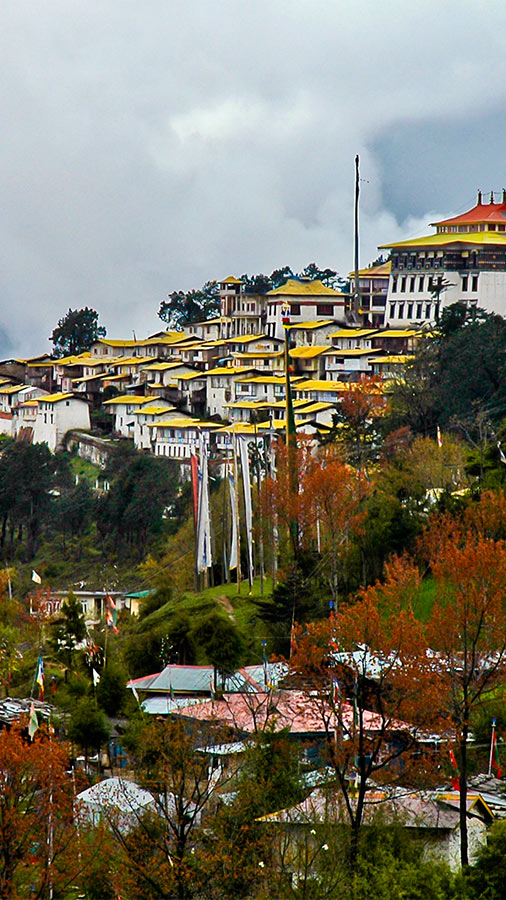
Tawang Monastery
Frequently Asked Questions on Tawang (FAQs)
What is the best time to visit Tawang?
The best time to visit Tawang is between October and May. After May, the monsoon season begins, making road travel difficult due to heavy rainfall. For snowfall and winter landscapes, December to February is ideal. That said, Tawang offers breathtaking beauty in every season.
What makes Tawang famous?
Tawang is renowned for its stunning landscapes, snow-capped mountains, and pristine blue lakes. The warm hospitality of the Monpa tribe adds to its charm. Tawang also holds historical importance, preserving stories and memories of the 1962 Indo-China War.
How far is Tawang from Guwahati?
Tawang is about 450 km from Guwahati, and the journey by road can take around 18 hours under normal conditions. Traveling in a single stretch is extremely tiring and practically not advisable. That’s why most itineraries include overnight halts at scenic locations like Nameri, Bomdila, or Dirang. These stopovers not only make the journey more comfortable but also add sightseeing opportunities along the route.
How many days are required to explore Tawang?
Covering Tawang town and its nearby attractions generally requires 3 to 4 nights. However, since Tawang is almost 450 km from Guwahati and the journey itself is long, halts at places like Nameri, Bomdila, and Dirang are usually included both ways. These stopovers act as sightseeing destinations as well, which is why a complete Tawang itinerary often stretches to 7–8 days or more, depending on your pace and customization.
Does it snow in Tawang?
Yes, Tawang usually experiences snowfall every winter. The best time to witness snow is from December to February. However, snowfall depends on weather conditions and cannot be guaranteed.
Do I need a permit to visit Tawang?
Yes. An Inner Line Permit (ILP) is mandatory for Indian citizens to enter Arunachal Pradesh, including Tawang. The ILP can be conveniently applied online or through designated government offices. For foreign nationals, a Protected Area Permit (PAP) is required instead of an ILP. PAPs can only be issued to groups of two or more foreign tourists traveling together through a registered tour operator.
Where is the largest monastery in India located?
The Tawang Monastery is the largest Buddhist monastery in India and the second largest in the world. It is a spiritual and cultural landmark of Arunachal Pradesh.
Why is the Jaswant Garh War Memorial famous?
The Jaswant Garh War Memorial honors Mahavir Chakra awardee Jaswant Singh Rawat, who heroically held off Chinese forces for 72 hours during the 1962 Indo-China War. The memorial commemorates his sacrifice and inspires future generations with his bravery.
Does Tawang have an airport?
No, Tawang does not have an airport. The nearest airport is Salonibari Airport in Tezpur (Assam), around 330 km away. However, most travelers prefer using Guwahati Airport for better flight connectivity and then continue the journey by road.
Is there a railway station in Tawang?
No, Tawang does not have a railway station. The nearest railhead is at Rangapara in Assam, but like air travel, Guwahati Railway Station is the most preferred starting point because of wider connectivity.
How high is Tawang located above sea level?
Tawang town is located at an altitude of about 10,000 feet (3,048 meters) above sea level, which is why visitors should acclimatize properly to avoid altitude sickness.
Is Tawang safe for tourists?
Yes, Tawang is considered very safe for tourists, including solo travelers and families. However, due to its proximity to the Indo-China border, visitors must carry valid permits (ILP/PAP) and follow security regulations.
Can senior citizens or kids travel to Tawang?
Yes, they can, but since Tawang is at high altitude with long road journeys, it is recommended to keep the itinerary slow-paced with halts in Dirang or Bomdila. Extra care should be taken in winter months when roads may be snow-covered.
Does mobile network work in Tawang?
BSNL and Airtel offer limited coverage in Tawang. Internet speed is often slow, and network issues are common in remote areas. Jio works in some patches but is not reliable. Carrying a BSNL SIM is often recommended.
What kind of food is available in Tawang?
Tawang offers a mix of Tibetan, Bhutanese, and Indian food. Popular local dishes include Thukpa, Momos, Zan (millet porridge), and butter tea. Basic vegetarian and North Indian meals are also available at most hotels and homestays.
Are ATMs available in Tawang?
Yes, there are a few ATMs in Tawang town, but they may run out of cash due to heavy tourist flow. It’s always safer to carry sufficient cash while traveling.
What type of clothing should I pack for Tawang?
While traveling to Northeast India, packing wisely ensures a hassle-free trip. Carry warm clothes (especially for Tawang and higher altitude areas), comfortable walking shoes, rain gear, basic medicines, valid ID proofs, and photocopies of your Inner Line Permit (ILP) or Protected Area Permit (PAP). A small backpack for day trips, sunscreen, moisturizers, and power banks are also recommended. For a detailed packing guide, check our Luggage Checklist for Northeast Travel .
Is Tawang suitable for honeymoon trips?
Yes, Tawang is becoming a popular offbeat honeymoon destination due to its snow-clad peaks, lakes, monasteries, and serene landscapes. However, couples must be prepared for long road journeys and cold weather conditions.
What is the significance of Sela Pass near Tawang?
Sela Pass (13,700 ft) is the gateway to Tawang, famous for its scenic frozen lake, snow-covered landscapes, and strategic location. It remains open almost throughout the year but may temporarily close in heavy snowfall.
Can I see yak in Tawang?
Yes, yaks are common in high-altitude areas around Tawang, especially near Bum La Pass and lakes. Local herders often keep them for milk, wool, and transportation.
Are taxis or shared cabs available in Tawang?
Yes, shared sumos and local taxis are available, but pre-booking is recommended during peak tourist season. Most tour operators also provide private cars with drivers for sightseeing.
What was Tawang’s role in the 1962 Indo-China war?
Tawang was one of the key locations during the 1962 Indo-China war. The town and nearby passes witnessed fierce battles before the Chinese army briefly occupied the area. Today, several war memorials like Jaswant Garh commemorate the sacrifices of Indian soldiers.
Who was the 6th Dalai Lama born in Tawang?
Tsangyang Gyatso, the 6th Dalai Lama, was born in 1683 in Tawang. He is remembered for his poetic works and unique lifestyle that combined spirituality with love for music and literature. His birthplace is an important cultural landmark in the region.
Why is Tawang Monastery famous?
Tawang Monastery is the largest in India and the second largest in the world after the Potala Palace in Lhasa. Founded in the 17th century, it houses ancient scriptures, vibrant murals, and a towering 8-meter statue of Lord Buddha.
What is special about the Sela Pass?
Sela Pass, located at 13,700 ft, is one of the highest motorable passes in India. Surrounded by snow-capped peaks and home to the beautiful Sela Lake, it remains snow-covered for most of the year and is a highlight of the Tawang journey.
What is Jaswant Garh War Memorial?
Jaswant Garh War Memorial is dedicated to Rifleman Jaswant Singh Rawat, who fought valiantly against Chinese forces in the 1962 war. Legends say he held his post for 72 hours single-handedly. The memorial is maintained by the Indian Army and is a popular stop on the way to Tawang.
What makes Tawang culturally unique?
Tawang is a blend of Tibetan Buddhist heritage and Arunachali tribal culture. Monpa tribes dominate the region, with festivals, traditional crafts, and rituals that make it one of the most culturally rich destinations in Northeast India.
